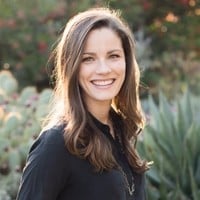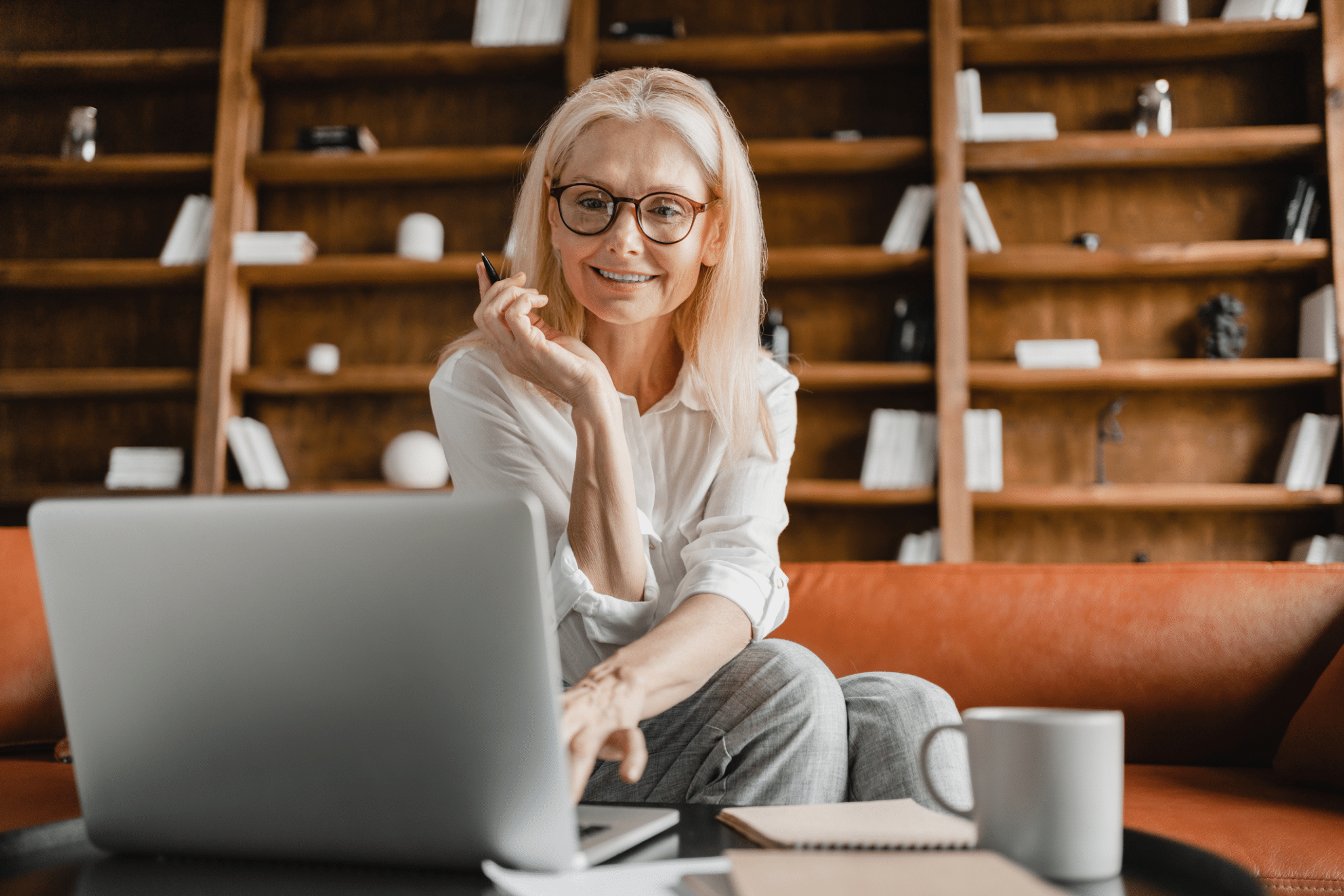“Just walk up to them and say hi, it won’t be that bad. Introduce yourself, what’s the worst that can happen?”, you tell yourself. Has this soundtrack played on repeated in your head during an event?
It can certainly feel like it is for some when networking in person.
Networking may not be the easiest and for some can even feel debilitating.
So, instead of awkward face-to-face encounters, what if there was a way to network without leaving home, or even forcing yourself to walk up to anyone? What if there was a way for it to be all set up for you?
Luckily, virtual events can be a breath of fresh air for those folks who don’t enjoy in-person networking.
While easier in some ways, many elements people rely on for connection — body language, the shared environment, and others — are missing.
On the flip side, networking during virtual events expands your reach to include people unable to attend because:
- They live in far-flung locations
- Have a disabilities prevent them from traveling
- Are constrained to limited budgets
- Are time-strapped
Not only does networking during virtual events aid loneliness, it also amasses a large network of folks happy to help you pursue your career goals.
If you are looking to develop your networking skills (behind the screen), this networking cheat sheet for virtual events guides you through steps to take before, during, and after virtual events to help you make and maintain authentic connections that thrive long after the event ends.
Build virtual networking confidence by networking more often
While some people hunkered down during the pandemic, Danny Groner, Marketing Director for Forecast Labs, and others used technology to reach beyond their current circles.
“More people around the world were available to me — people that I never would have been bold enough to suggest, ‘Let’s go grab lunch’, because they were either influential in my circles — or outside of my circles completely — and might not have known who I am,” Danny said.
When Danny made connections via email or Twitter, he arranged virtual calls since everyone had plenty of free time. This helped Danny hone his networking know-how. “My networking skills improved dramatically because I was having conversations with people that, at a different point, I might have felt were out of my league or unavailable to me,” Danny said.
“It leveled the playing field because we were all defining ourselves – not by job title and not by the size of the problem — during the last couple of years.”
Since Danny overcame his initial confidence barriers, he now attends at least two webinars per day, along with three in-person events each month, so he can learn, connect, and grow professionally.
What opportunities are there for virtual networking?
The networking opportunities at virtual events have varying levels of structure and interaction. By understanding some of the formats, you can better prepare for them:
- Meet-and-greets: Receive a formal introduction to a well-known person.
- Q&A: Ask the keynote or session speaker questions about their content.
- Roundtables: Hash out current topics in your industry with a few other experts.
- Speed Networking: Rotate through quick introductory chats with assigned or random partners.
- Games: Bond with other attendees over a structured competition that takes the pressure off small talk.
Not only does knowing the format help you know what is expected of you, but you also know what you might get out of the experiences.
Step 1: Define your networking goals and prep accordingly
If you’re even considering registering for a virtual event, you may have already decided that attending and networking will help you progress toward a goal. Once you register, it is time to develop a plan for making it happen.
Research who you want to connect with
Check the website, or ask an organizer for the attendee list so that you can prepare. If the list isn’t private, skim attendees’ LinkedIn profiles before the event so you’ll recognize others’ names as they pop up with talking points to help you initiate conversations.
Preparation makes networking more productive and shows a genuine interest in building a connection.
Set your purpose
Defining your goals and motivations will propel you through goal setting and research, so consider setting your focus by answering these questions:
- Why are you attending the event and its networking sessions?
- Who do you need to meet to help you with your goal?
- How can you help them, and how can they help you?
- What things do you have in common?
- What insights can you offer?
- What is your ideal outcome?
When finished, craft a list or table to record information about the people you want to meet. For each person, jot down thoughts about how you would both benefit from connecting.
Attend a virtual event outside of your usual sphere
Sure, it makes sense to attend a marketing event if you’re a marketer, but don’t sleep on opportunities to attend events adjacent to your field.
Danny first attended events to find peers in the same field with the same types of positions. “When I was working at Series A or B startups, I was looking for kindred spirits who were similarly motivated to solve the problems that exist within Series A and B startups,” Danny said.
Then he started attending events related to his career, and other opportunities blossomed. “I got a lot more value out of going to those networking events because I wasn’t sizing myself up against other people,” Danny said.
“More importantly, I was by far the smartest marketer in that room because I was the only marketer in that room. So, it allowed me to be curious in terms of understanding how other people think, what makes them tick, and what’s keeping them up at night. Then, I take those insights back to my own respective arena, and problem solve or try to understand what motivates people that I might work with.”
Make yourself virtually approachable
Want people to accept your connection requests? It helps if people want to talk to you. Just as you’ve browsed others’ profiles, they will search for you, too. If that kind of pressure makes your skin crawl, update your LinkedIn profile and Google yourself to see what pops up a few days before the event. Your profiles should be clear about who you are, what you do, and what you have to offer.
First impressions count, so fill out your event bio thoroughly to increase your chances of meeting people you might have things in common with.
Because you shared, potential connections can find talking points about things you like, things you’ve done, and your social media profiles.
Once your bios and profiles are polished, amp up your online presence to up your odds of being noticed. For example, use the event hashtag on social media to broadcast that you’re going to attend and ask who else is attending.
If you want to see some familiar faces, send an invitation with a link to the virtual event registration page, to someone you’d like to reconnect with.
Maybe you’re only interested in new faces. If that’s the case, check the attendee list and connect ahead of time by sending a greeting card or a LinkedIn message saying, “Hey, I see we’re both going to this virtual event.” Then, schedule a time during or after the event to chat about your event takeaways.
If you find yourself at a loss for words when put on the spot, plan responses to pre-assigned networking questions. Also, consider prepping your elevator pitch — a short 2-3 sentence introduction about who you are and what you do. Toss in something interesting that they’ll remember after the event.
Also, consider planning comments and questions for Q&A sessions in advance, so you can focus on the content and start side conversations in the chat during the event.
Amp up your energy on networking day
Networking at a virtual event is a valuable experience, but to make the most of it, make it an experience. Transform your space, so it is camera-ready:
- Wear comfortable, soft layers that you enjoy hanging out in
- Stash healthy (and delicious) treats nearby to snack on during sessions
- Connect your computer up to a TV, so other websites or email aren’t a distraction
- Play hype music or do a calming meditation session before the event begins
Need extra motivation? Try setting the number of quality interactions you want to have. For example, Danny typically connects with five people, which results in a couple of 1:1 conversations scheduled for later.
Check yourself (and tech yourself) before you wreck yourself
Before the event, learn your way around the event app, so you can find quick answers to questions you have during the event. You’ll also know where the networking opportunities and contact information are.
Be sure to also test how your environment will function during the event:
- Is your background free of distractions (or embarrassing items)?
- Do your microphone, speakers, and camera work?
- Is your WiFi connection strong?
- Is your lighting flattering?
If the event is hosted on the RingCentral Events platform, put your mind at ease by running the Pre-Event Check.
Some events won’t require video, so most networking will be done through chat. While attending a camera-optional event, you will seem more approachable if you leave your camera on. So, consider swapping the bathrobe for comfy business casual, and running a brush through your hair — whatever you need to do to feel presentable.
Step 2: Be there (or be a virtual networking square)
Some register for virtual events thinking it can be on in the background while getting other things done. And although possible, it comes at a cost of missed networking opportunities.
How? Other attendees are also there to learn and connect. If you don’t participate, they miss out on your ability to help them find solutions.
Participate exactly the right amount
Instead, start by logging in early — not five minutes after the event begins. During the pre-session banter, comment in the chat with your name, one sentence max about what you do, and your LinkedIn URL — make yourself known .
Then, share that you’re happy to make new connections. People will scroll quickly through the overflowing chat box, so your intro should be short and sweet.
While you’re scrolling through the introductions, open LinkedIn in a separate tab. Easy access to LinkedIn lets you:
- Skim the profiles of people in the session
- Respond to and initiate new connection requests in the moment
- Mention the event in the connection request messages you send
During the session, aim to share 1-2 responses or questions. Too few and you miss out on interactions, too many and you take time from others. In the meantime, take notes on the session content, people in the event, and chat comments you find relevant to your goals.
Use chat as your go-to networking tool
Unlike in a primary school, side conversations are encouraged during virtual events. It’s like finding friends on the playground (except now you can pre-screen using your open LinkedIn tab).
What’s another way to gauge if you will click with someone?
Danny said he knows the people who sign up for a webinar and participate in the chat are his people. “There’s a strong likelihood that other people like me are not just playing the event in the background of their work, going for a walk outside, or preparing their lunch. The people actually participating in the chat are the type of people I’m looking for.”
Using chat as a networking tool, you can:
- Compliment someone on their question
- Ask open-ended follow-up questions
- Exchange contact information
While it is tempting to attend only the content-based virtual sessions because you’re there to build skills, keep in mind that virtual networking sessions aren’t filler. They’re valuable opportunities to develop authentic relationships.
Attend official virtual networking events
Unsurprisingly, 25% of jobs are found through professional connections. Even though the virtual networking sessions seem skippable, they can be career makers. If your virtual event provides networking, you have nothing to lose by going all in. For example, some RingCentral Events customers use the Speed Networking Tool.
This is like speed dating for networking. It’s the perfect way to connect with people outside your circle quickly and in real time. All you need to do is click the “ready” button, and our algorithm will automatically match you with a new person at the event. You have three minutes to chat and decide if you want to exchange business cards. You never know who will be on the other end.
Be genuinely curious about other people
You have been matched with someone, but what do you talk about? Consider trying this conversation path:
- Begin by asking open-ended questions that require more than a yes or no answer
- Follow up with more detailed questions
- Listen with intention for ways to be helpful while your conversation partner is speaking
- Briefly answer when you’re asked a question
- Encourage the other person to talk more by turning the topic back to their interests
- End the conversation by asking how they prefer to keep in touch
Whether they prefer email, phone, or social media, save the contact information in a safe, and easily accessible place — or simply find it on your RingCentral Events page — because you will need it tomorrow.
Step 3: Stay in touch with your new contacts
Look at you! You schmoozed. You connected. You did all the right things.
But you’re not finished yet. Just like you water your living room plant, once you have made authentic connections, you have to put in the work to help them thrive.
Touch base within 24 hours
Immediately following the event, ride the tails of the good vibes from the event with your own connection blitz. Follow up with new connections by sending a message on LinkedIn or email and share something about the session that resonated with you.
While you’re catching up with your new contact, invite them to join you for a virtual or in-person coffee chat so you can get to know each other better.
Give more than you take by helping people connect
Make the most of your event experience by helping others connect. When speaking with your new connections, consider other folks you think might benefit from meeting one another.
Be the catalyst to the formation of a mastermind group, a new career, or a budding friendship — and your connections will remember that and likely reciprocate.
Be the event’s hype person
Within hours of the event, expand your reach by sharing swag or your photobooth photo using the event hashtag on social media. This will help you reach folks who attended different sessions but are standout additions to your network.
When the next event rolls around, return to social media to check in with your connections to see if they’re attending the upcoming event, too.
Reach out when you don’t need anything
Just like your plant needs fertilizing, your network benefits from regular attention. Your connections need a reminder that you exist every now and then. The key is to keep in touch when you don’t need anything, but your intentions for staying connected are sincere. When in doubt, be useful. Here are some ideas to think about:
- Send snackable insights — like gifs, memes, and videos — that people enjoy consuming
- Share key points from fresh research specific to your niche with your network
- Touch base on a regular schedule to see if there’s any way you can be helpful
- Amplify your contacts’ accomplishments when you hear about them
Build your connection incubators
By following these tips, you may even become known as a connector. In the future, you could expand your network by starting a community of connections, so everyone reaps the benefits of the work you put into maintaining your network.
To find out more about how you can network with ease, sign up for a free account now.
Originally published Sep 01, 2022, updated Oct 20, 2024





